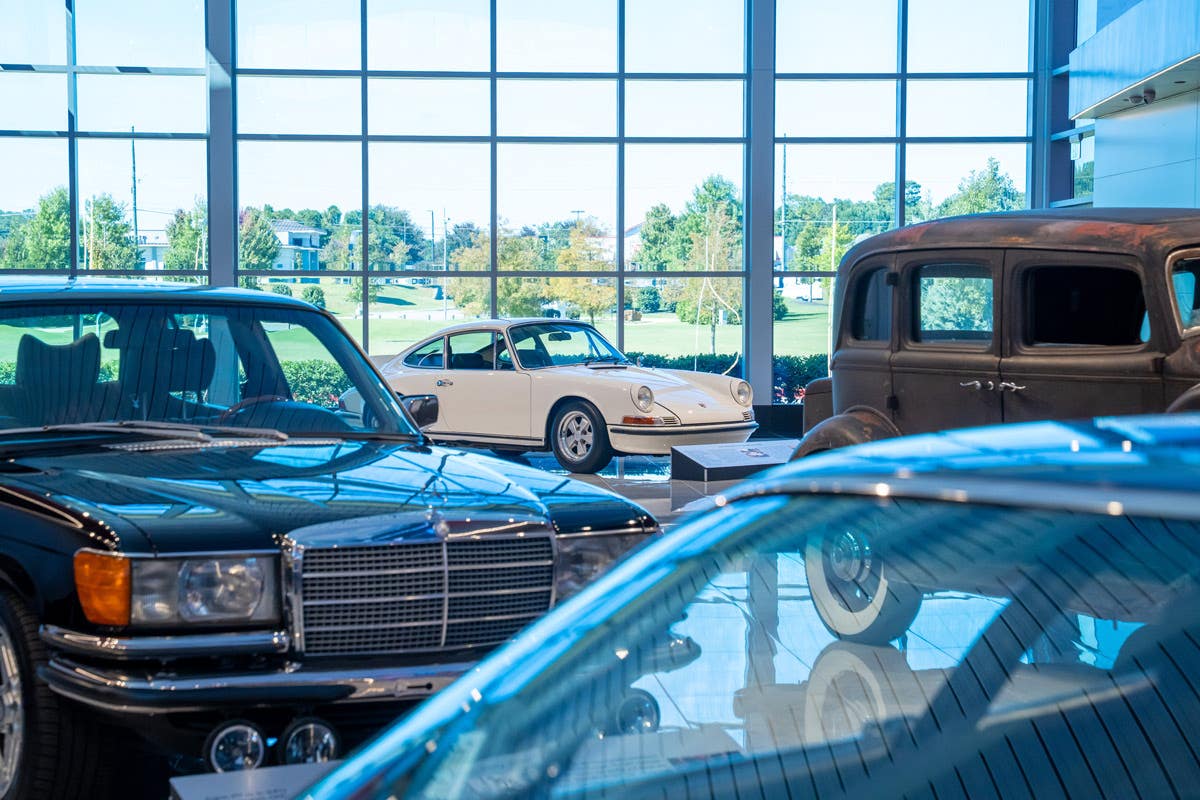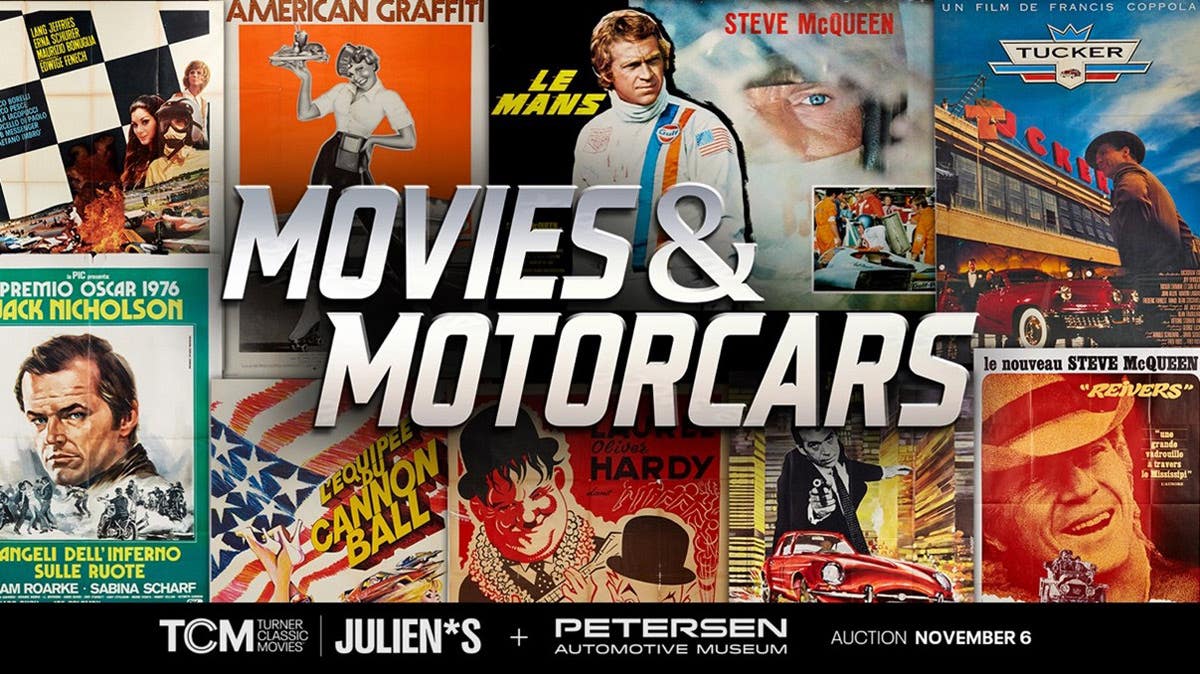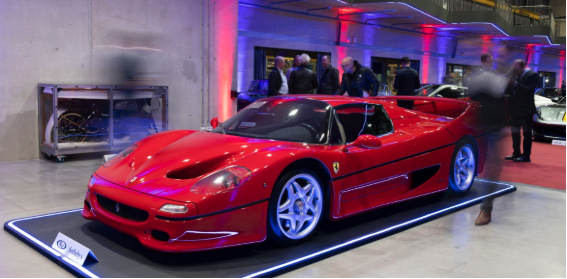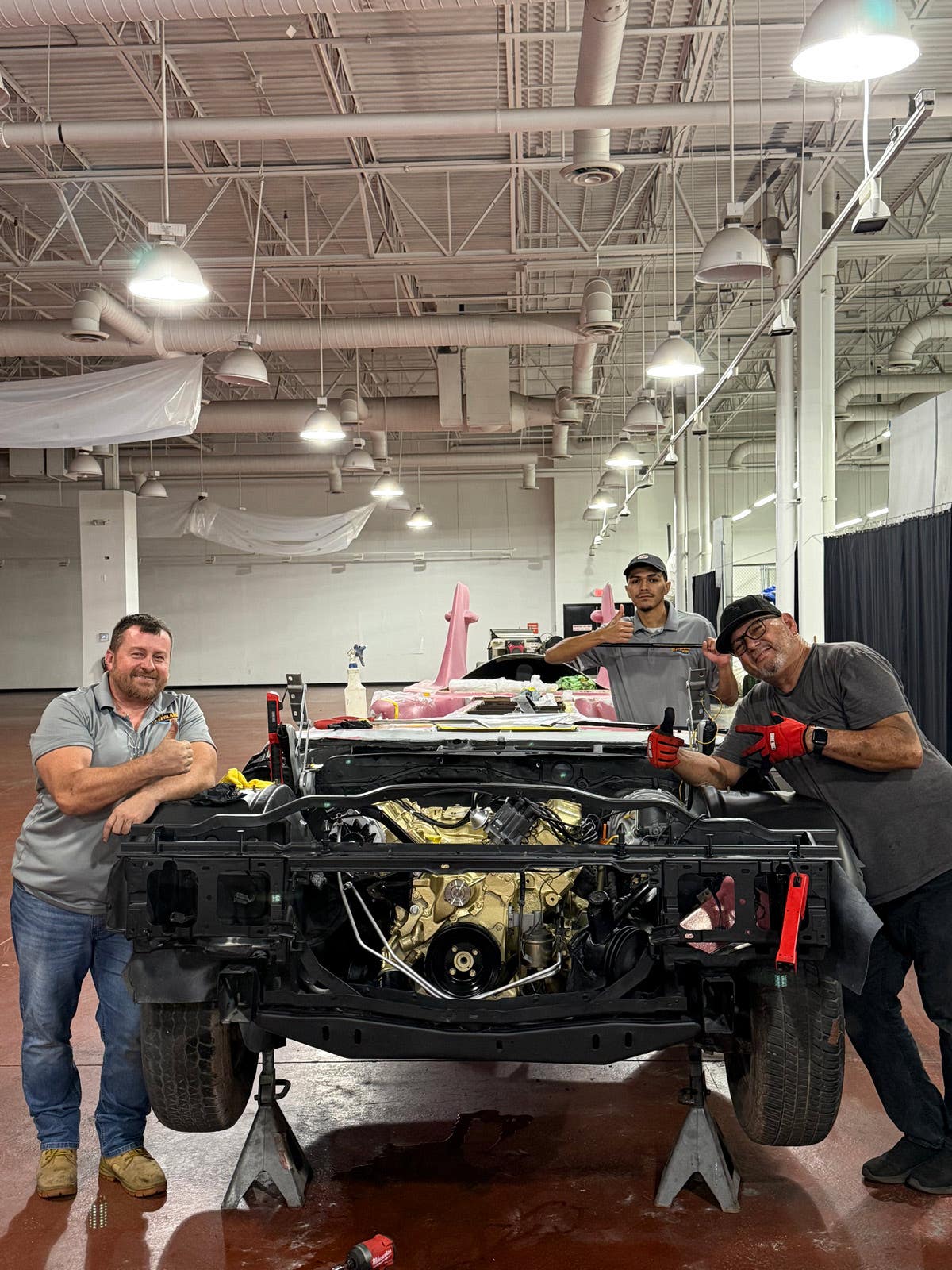In the America of the 1950s, anything seemed possible. And for the Ford Motor Co., that was especially true. Ambitious projects like brand new V-8s, two-seater Thunderbirds, a whole new line of cars and a reinterpretation of the classic Continental all seemed possible to Henry Ford II and his "Whiz Kids" that were running the show.
The Continental Mark II would be introduced as a prestige automobile whose ownership was nearly on an invitational basis. And along with this upcoming luxury coupe, Ford's engineers wanted to showcase their expertise by offering a retractable-roof version as well.
The 1957 Skyliner was a mechanical wonder. In less than one minute, the car could transform itself from a snug two-door hardtop to an open-air convertible.
A disappearing hardtop automobile had always been a designer's dream and had even been realized on American prototypes in the '30s and '40s and some European cars. But could a steel roof that can vanish into the luggage compartment be built into a mass-produced vehicle? To help answer that question, a young engineer, Ben Smith, was lured from GM to Ford and placed in charge of making this dream a reality.
There was a secretive Special Products Division (SPD) that was at work on the Mark II, and from 1953 to 1955, Ben and his group worked on making the roof disappear. They tried hydraulics and a roof split in half; they tried a front-and-rear-opening trunk lid and a retracting rear window and found these were all unworkable. But they developed a power actuating screw jack, smaller electric motors, flexible shaft drives, ratcheting screw locks, multi-connectors and the means to make it all work at the push of a button. At a top-level meeting on Jan. 7, 1955, the Continental retractable made its first official showing. The roof raised and lowered to the delight of upper management. The concept was now ready for mass production development.
Although the retractable hardtop mechanism that eventually appeared on Ford Skyliners was originally intended for the Continental Mark II, the luxurious car never received it. All Continental Mark II coupes were conventional two-door hardtops
The Continental was a car whose base sales figure was set to be a then-astronomical price of $10,000. Although thoroughly tested, the retractable mechanism was at this time deemed too risky to be offered on an automobile whose main mission was to set new standards in luxury vehicles.
While the SPD was developing the car and then showed that a retractable hardtop could be built, the marketing department conducted surveys. They discovered potential Mark II buyers were willing to pay a $2,500 premium for a retractable hardtop, which at the time was more than a brand-new Ford.
Marketing's discovery showed that this might be an option that had a larger appeal than one that was only available on a limited-production vehicle. Why sell 2,000 a year when you might be able to sell 20,000, even if it sold for less per unit?
In the '50s, the largest growing segment of automotive styles was the hardtop. With hot-selling coupes, and then the widespread introduction of four-door hardtops in 1956, some felt that hardtops might replace traditional pillared vehicles altogether. Buyers might be lured into showrooms by flashy convertibles, but usually left buying more "practical" daily drivers. That convertible look was the hardtop's appeal. But a true hardtop convertible would be the best of both worlds.
The SPD's project, as it turned out, was not a very well-kept secret throughout Ford; and the Mercury, Lincoln and Ford divisions were becoming interested in its potential. "Whiz Kid" Robert McNamara coveted, and later received, the top job at Ford. But while he was Ford Division head, he wanted every reason for buyers to purchase a Ford. And what better way than to show the world that the latest automotive advancement ' one that might completely replace soft-top convertibles ' was another "Ford first?"
So in February 1955, Smith and the crew were given their second monumental task. They now had to graft the retractable hardtop mechanism onto the already well-along 1957 Ford.
For 1958, the Skyliner received quad headlamps, just as many other cars of the model year did. With its top up, a Skyliner can be identified by its low roof, large rear flanks and a separation seam near the front of the top.
In some ways, the design of the proposed all-new, lower-and-wider Ford was better suited to a hide-away hardtop design then the Mark II was. But still, changes needed to be made. Of course, the top had to be different. It was shorter and lower than the one found on the standard Ford. It had a more vertical rear window, a blind sail panel and a "flipper." The flipper was the front section of the roof that folded to shorten the top when it was lowered. The rear deck lid and rear fenders were longer than the standard version. The retractable also had an exclusive frame, body mounts, rims, gas tank and back seat. Although they look the same, even the side trim pieces are not interchangeable. Assembling retractables required special care, so they were relegated to their own production lines.
Three prototypes were made for testing. The retractable's scheduled introduction was always set to take place after the regular '57 Ford models. Actual production started a few months behind schedule, so one pre-production prototype was pressed into service for promotions. Painted and re-painted for numerous advertising photographs, this prototype was sent to the New York Auto Show in December 1956 for the car's first public showing.
Production started in March 1957, and now all that was needed was a name. A list of more than 1,000 names was trimmed to 126 finalists. On March 11, 1957, an Executive Communication from McNamara finalized the model's name, which was borrowed from the transparent-top Fords of '54-'56. And so it was christened the Ford Skyliner ' the world's only hide-away hardtop.
The retractable debuts
On April 18, 1957, Ford dealers across the country displayed in their show rooms the all-new Ford Skyliner. Combining the practicality and security of a hardtop design with the fun of an open convertible, Ford introduced a new automobile and the first crossover vehicle.
Utilizing mechanisms and designs developed for the 1956 Continental Mark II, the first mass-produced, fully automatic retractable top was brought to the public as a 1957-'59 Ford. Viewed by Ford as an amazing engineering advancement, it was considered a great draw for buyers to visit their Ford dealers. Hope was high that this design might actually replace the soft-top convertible, and Ford would be known as the innovator.
The last year for the Skyliner was 1959. Unlike soft-top convertibles, Skyliners didn't require a boot to conceal the lowered top. Instead, a package shelf filled the area where the folded material of a normal convertible was stored, providing a clean style line.
Longer, lower and wider than its '56 predecessors, the 1957 Ford was an all-new Ford right from the start. Stylish for its day, this car would go on to out-sell Chevrolet for the 1957 model year. The top-of-the-line Ford was the new Fairlane 500 model, and two convertibles were offered ' the Sunliner, which was a conventional soft-top auto, and the ground-breaking Skyliner.
With the pull of a dash-mounted switch, the trunk deck would automatically unlock and open in the opposite direction of conventional automobile deck lids. While in the upright position, a rear package tray was unfolded from the trunk lid. Then the top would unlock from the windshield header and rear sail panel mounts. Electrically operated screw jacks would activate to help raise the top and carry it to the trunk. While retracting, the front portion of the roof, known as the flipper, folded to enable the top to fit into the truck cavity. Once the top was nestled in the trunk, the rear deck lid closed and locked. The whole operation took just under one minute and could be reversed when the same switch was pushed.
Although only available on an abbreviated model year, the Skyliner sold 20,766 units for 1957, a promising start. Almost four times as many Sunliners were sold, but at a base price of $2,942, the Skyliner was Ford's most costly family car offered that year.
For 1958, Ford offered a facelift on all models, including the Skyliner. This year's Fairlane 500 borrowed styling cues from the all-new four-passenger Thunderbird. One of the most notable differences on this new model was 1958's hottest styling trend ' quad headlights. Another trend for the year was an economic downturn known as the Eisenhower recession. Across the board, automotive sales were down, and the Skyliner was no exception. Only 14,713 were produced for 1958.
A redesigned Ford was offered for 1959, and the Skyliner was part of the lineup. Since more time was available to work on this design, the retractable mechanism was improved and actually melded into the car more seamlessly. The flipper was made shorter, which, in turn, made for a shorter trunk cavity. All '59 Ford roofs now had a blind sail panel, so, overall, the Skyliner looked more like its stable mates than the previous years' models. Midway through the year, Ford introduced a new top-of-the-line series ' the Galaxie. Both convertible models migrated to this upscale line. Most Ford models posted better sales than 1958, but the Skyliner only sold 12,915 units for the model year.
Even though sales declined for its three-year model run, and probably because design work started before these numbers were known, a 1960 retractable was planned. The retractable project had been done on a "contract" basis between the Continental and Ford divisions ' the first and very likely only time this was done at the company. But by the time the 1960 models were being designed, the engineering team that designed the original mechanism had already been disbanded. The project was handed over to a group of engineers that five years earlier had told the Special Products Division that building a retractable was not possible. After six months and expenditures of several hundred thousand dollars, they proved themselves correct.
When in operation, the hide-away hardtop still turns heads 50 years after its debut. Skyliners continue to be popular with collectors, but never appreciated as much as one might think for a vehicle this unique. In fact, many times the Sunliner will command higher dollars, because people didn't regard them as collectible as the Skyliner early on, so fewer survive. Now, after years of being relegated to the 1950s fad bin like a discarded Hula Hoop, the Skyliner seems to have developed its share of imitators. The retractable convertible concept has been reintroduced by both domestic and foreign automakers. So one can only ask: Is there a Ford retractable in our future?








